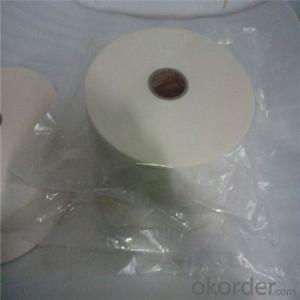When it comes to maintaining the integrity and efficiency of your HVAC system, one component that often goes overlooked is the humble flexible duct collar. But don’t let its unassuming appearance fool you; this small yet crucial piece of equipment plays a vital role in protecting your ductwork from damage. In this article, we’ll explore the importance of flexible duct collars, how they work, and why you should consider investing in them for your home or business.
The Importance of Duct Protection
Ducts are the lifelines of your heating, ventilation, and air conditioning (HVAC) system. They transport warm or cool air throughout your space, ensuring a comfortable environment year-round. However, ducts are susceptible to damage from a variety of sources, including rodents, pests, moisture, and even accidental impacts from furniture or other objects. Damaged ducts can lead to reduced airflow, uneven heating or cooling, and higher energy bills. That’s where flexible duct collars come in, providing a barrier against these threats and helping to extend the life of your ductwork.
How Flexible Duct Collars Work
Flexible duct collars are designed to fit snugly around the joints where ducts connect to other components of your HVAC system, such as air handlers, vents, and plenums. They are typically made from flexible materials like neoprene or silicone, which allow them to conform to the shape of the duct and provide a tight seal. This seal prevents air leaks and helps to maintain consistent airflow throughout your system. Additionally, the collars act as a protective layer, shielding the ducts from potential damage.
Benefits of Using Flexible Duct Collars
1. Protection Against Pests: Rodents and other pests can cause significant damage to ducts by gnawing on them. Flexible duct collars create a barrier that is difficult for these critters to penetrate.
2. Moisture Resistance: Moisture can lead to mold growth and corrosion within the ducts. The material of the collars is often moisture-resistant, helping to keep your ducts dry and healthy.
3. Prevention of Air Leaks: By creating a tight seal around the duct connections, flexible duct collars minimize air leaks that can lead to energy waste and uneven temperatures.
4. Ease of Installation and Maintenance: Installing and maintaining flexible duct collars is generally a simple process, requiring minimal tools and expertise. This makes them an accessible solution for DIY enthusiasts and professionals alike.
5. Cost-Effectiveness: Investing in flexible duct collars can save you money in the long run by reducing the need for duct repairs and lowering energy consumption.
6. Enhanced Indoor Air Quality: By preventing pests and moisture from entering the ducts, flexible duct collars contribute to better indoor air quality, which is especially important for those with allergies or respiratory issues.
Choosing the Right Flexible Duct Collar
When selecting a flexible duct collar, consider the following factors:
– Material: Choose a collar made from durable, flexible material that can withstand the conditions in your HVAC system.
– Size: Ensure the collar is the right size for your duct connections to ensure a proper seal.
– Compatibility: Make sure the collar is compatible with the components of your HVAC system.
– Quality: Look for collars from reputable manufacturers known for their quality and durability.
Installation Process
Installing a flexible duct collar is a straightforward process:
1. Clean the Area: Before installation, clean the area around the duct connection to remove any dust or debris.
2. Measure and Cut: Measure the circumference of the duct connection and cut the collar to size, if necessary.
3. Slide On: Slide the collar onto the duct connection, ensuring it fits snugly and covers the entire joint.
4. Secure: Some collars may require additional securing, such as with adhesive or clamps, to ensure they stay in place.
5. Check for Leaks: After installation, check for any air leaks around the connection to ensure the collar is functioning properly.
Maintenance and Replacement
Regular maintenance of your flexible duct collars is essential to ensure their effectiveness. This includes:
– Inspecting: Regularly inspect the collars for signs of wear or damage.
– Cleaning: Clean the collars as needed to remove dust and debris that could affect their performance.
– Replacing: Replace collars that show significant signs of wear or damage to maintain optimal protection and performance.
The Bottom Line
Flexible duct collars may be a small component in the grand scheme of your HVAC system, but their impact on the overall performance and longevity of your ductwork is significant. By investing in and properly maintaining flexible duct collars, you can protect your ducts from damage, save on energy costs, and enjoy a more comfortable and healthy indoor environment. So, the next time you think about upgrading or maintaining your HVAC system, don’t forget the little guys – they just might be the key to a more efficient and durable system.

